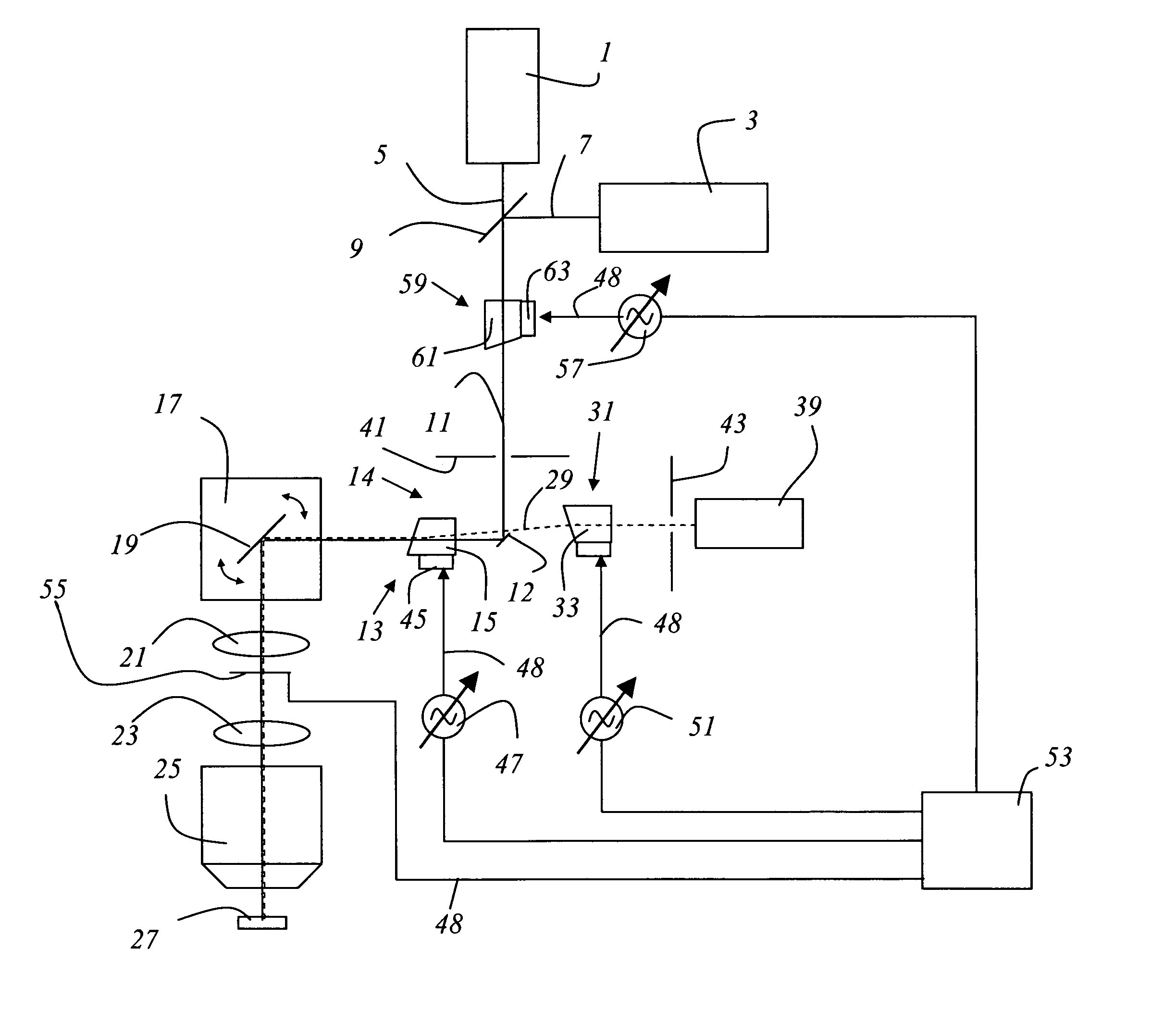Device and method for controlling the optical power in a microscope
a technology of optical power and microscope, which is applied in the direction of photometry, instruments, electric discharge lamps, etc., can solve the problems of inflexible use in practice, propagation of measurement errors in calibration curves, and only detecting the actual crystal temperature with a delay in time, etc., to achieve convenient adjustment, high precision, and constant
- Summary
- Abstract
- Description
- Claims
- Application Information
AI Technical Summary
Benefits of technology
Problems solved by technology
Method used
Image
Examples
Embodiment Construction
[0036]FIG. 1 shows a device according to the present invention for controlling the optical power in a microscope, the microscope shown in the Figure being designed as a confocal scanning microscope. The microscope includes two lasers 1, 3 whose emitted light beams 5, 7 have different wavelengths and which are combined into an illumination beam path 11 by dichroic beam combiner 9. In addition, the microscope has an acousto-optical element 59, which is designed as an AOTF 61.
[0037]After passage through the AOTF 61, illumination beam path 11 proceeds to a deflection mirror 12 and from there to a further acousto-optical element 13, which is designed as an AOTF 15. From acousto-optical element 13, illumination beam path 11 reaches a beam deflection device 17 which contains a gimbal-mounted scanning mirror 19 and guides the illumination beam path 11 through scanning optical system 21, tube optical system 23, and lens 25 and across or through sample 27.
[0038]A measuring device 55 is placed...
PUM
 Login to View More
Login to View More Abstract
Description
Claims
Application Information
 Login to View More
Login to View More - R&D
- Intellectual Property
- Life Sciences
- Materials
- Tech Scout
- Unparalleled Data Quality
- Higher Quality Content
- 60% Fewer Hallucinations
Browse by: Latest US Patents, China's latest patents, Technical Efficacy Thesaurus, Application Domain, Technology Topic, Popular Technical Reports.
© 2025 PatSnap. All rights reserved.Legal|Privacy policy|Modern Slavery Act Transparency Statement|Sitemap|About US| Contact US: help@patsnap.com


